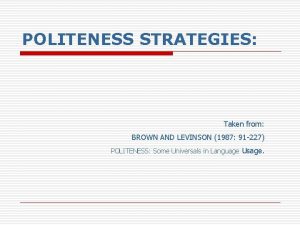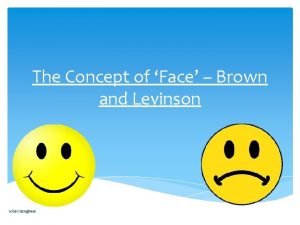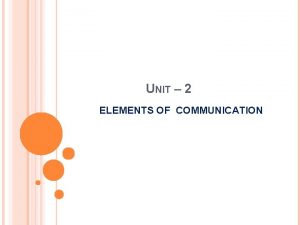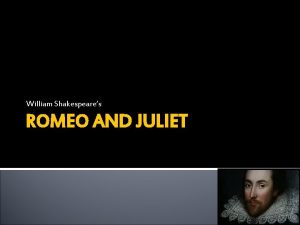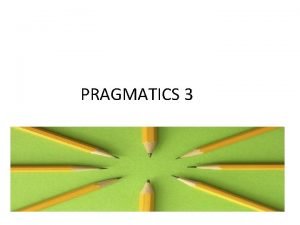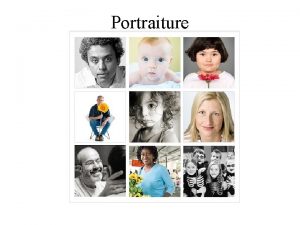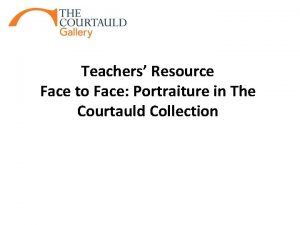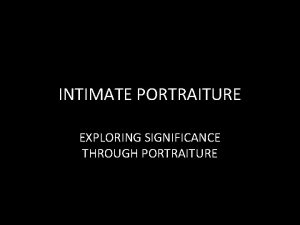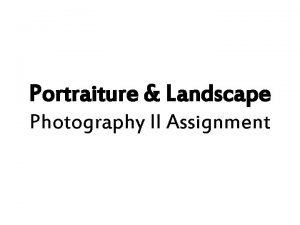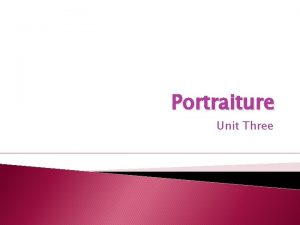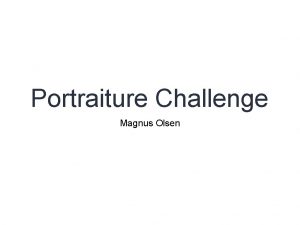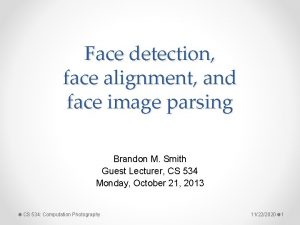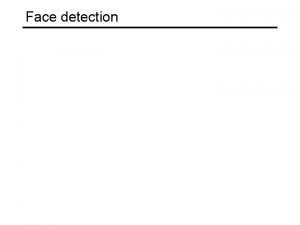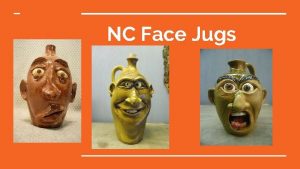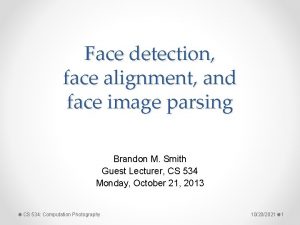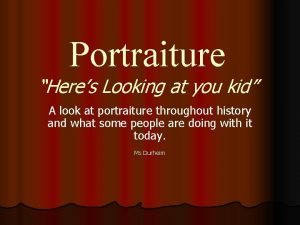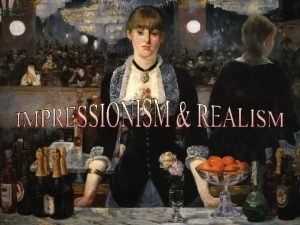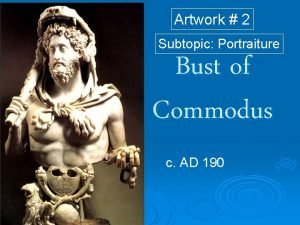Teachers Resource Face to Face Portraiture in The




























































- Slides: 60

Teachers’ Resource Face to Face: Portraiture in The Courtauld Collection

Introduction The Courtauld Institute of Art runs an extensive programme of learning activities for schools, colleges and teachers. From gallery tours and workshops to teachers’ events there are many ways for schools and students to engage with our collection, exhibitions and the Institute’s expertise. The Face to Face: Portraits in the Courtauld Collection learning resource is for teachers to read and learn about the history of portraiture through The Courtauld Collection. Our aim was to look at different historical and social contexts to help develop a greater understanding of what portraiture is and how it has changed over time. The following Power. Point presentation summarises themes of the teachers’ resource in an easily accessible format for you and your students.

Ø The traditional hierarchy of the arts • Fine art academies privileged history painting (scenes from ancient history, mythology and the Bible). However, portraiture was a close second as the human figure was considered worthy of representation. • Portraiture has been an principle genre since Roman times. For the sitter, portraiture serves an important commemorative and symbolic function. It allows a person to exist despite their physical absence. • For artists, portraits have often provided the most secure way to make a living. The seventeenth-century Flemish artist Anthony Van Dyck (1599– 1641) made his fortune painting European nobility and royalty.

Portrait of a Man in an Armchair, 1616– 18 Artist: Anthony van Dyck Medium: oil on panel 120. 9 x 80. 8 cm The Courtauld Gallery, London

Portraiture in The Courtauld Gallery Ø Connecting with the past • Thomas Gainsborough (1727– 1788) painted a Portrait of Mrs Gainsborough, around 1778, after three decades of marriage. Her carefully rendered features and direct gaze make this one of the most engaging portraits in The Courtauld Collection. • You can feel the texture of her skin, down to the slightly sagging oval of her face (she was fifty when she sat for this portrait). Her expression appears all at once benevolent and resigned. • In contrast, her attire and the background are painted much more freely. The brush marks give the work a heightened sense of immediacy.

Portrait of Mrs Gainsborough, Circa 1778 Artist: Thomas Gainsborough Medium: oil on canvas, 76. 6 x 63. 8 cm The Courtauld Gallery, London

Ø Fashioning personal and professional identities • Portraits were most often commissioned at a key moment in the sitter’s life. • The way sitters are depicted, their dress and surroundings all convey something specific about their character. • Goya y Lucientes’ (1746– 1828) Portrait of Francisco de Saavedra shows the high-ranking Spanish politician ready to get up at any moment to take care of government affairs. • Hans Eworth’s (c. 1520– 1574) Portrait of John Luttrell, is an example of an allegorical portrait. It celebrates Luttrell’s military bravery. The female figure with an olive branch represents peace.

Portrait of Don Francisco de Saavedra, 1798 Artist: Francisco de Goya y Lucientes Medium: oil on canvas 200. 2 x 119. 6 cm The Courtauld Gallery, London

Allegorical Portrait of Sir John Luttrell, 1550 Artist: Hans Eworth Medium: oil on panel, 109. 3 x 83. 8 cm The Courtauld Gallery, London

Ø Personality and Emotion • The best portrait painters are able to reveal the inner life of their sitters, but we must remember that portraits are very staged affairs. • It is rare in real life that we are able to scrutinise another human being in the way we scrutinise portraits. We often project a series of judgements and emotions onto the sitters. • Especially interesting is when an anonymous sitter is represented. This was a nineteenth-century development, when painters decided to represent modern life. In Pierre-Auguste Renoir’s (1841– 1919) La Loge a model and Renoir’s brother play the part of much wealthier Parisians at theatre.

La Loge (Theatre box), 1874 Artist: Pierre-Auguste Renoir Medium: oil on canvas, 80 x 63. 5 cm The Courtauld Gallery, London

Ø Self-portraiture • Self-portraiture has been pursued by artists since the early Renaissance. Not only does it allow the artist to have a patient and ever willing model, but it is also a way to fashion his/her identity, to present themselves and their art to the world. • The kind of serial self-portraiture and fashioning of identity that is the hallmark of some contemporary artists can in fact be traced back to painters like Albrecht Dürer (1471– 1528) and Rembrandt van Rijn (1606– 1669). • Vincent van Gogh (1853– 1890) painted two dozen self-portraits in the short span of three years. Self-Portrait with a Bandaged Ear is perhaps the most moving and personal.

Self-Portrait with Bandaged Ear, 1889 Artist: Vincent van Gogh Medium: oil on canvas, 60. 5 x 50 cm The Courtauld Gallery, London

The Democratisation of the Portrait • The potential of a portrait to create a memorable public image that conveyed its sitter’s status and power was recognised early on, and for centuries, portraiture remained the domain of the wealthy and powerful. • The commanding equestrian portrait of Philippe, Regent, Duke of Orleans, by Charles Parrocel (1688– 1752) shows the Duke’s confidence and suitability as France’s leader (he ruled until Louis XV came of age). • Parrocel specialised in military scenes. This drawing seems to have been intended as a finished work in itself, but it could have been reproduced in printed form for greater impact.

Philippe, Regent, Duke of Orleans, on horseback, 1711– 31 Artist: Charles Parrocel Medium: pen and Indian ink, watercolour, bodycolour on blue paper 38. 3 x 51. 4 cm The Courtauld Gallery, London

Ø Nicolas Quesnel (op. 1574–m. 1632) • Part of a family of artists who specialised in portraits. • His dignified Portrait of Madame de Carnavalet typifies the elite, courtly nature of much earlier portraiture. • Madame de Carnavalet was a Breton noblewoman and lady-inwaiting to Marguerite de Valois, Queen of France. • Quensel did not softened flaws in her features, but nonetheless rendered her with the gravity and elegance typical of late sixteenth-century French court portraiture.

Portrait of Madame de Carnavalet (? ) Artist: Nicolas Quesnel Medium: chalk (black and coloured) on paper 32. 5 x 22. 3 cm The Courtauld Gallery, London

Ø Peter Paul Rubens (1577– 1640) • Artists have from the beginning made portraits of family members and friends, which tended to be more informal and were not necessarily intended for public display or sale. • There are few more spectacular than Peter Paul Rubens’ near life -size portrait of his second wife, Helena Fourment. • Rubens was a Flemish painter, draughtsman and diplomat; he was the most versatile and influential Baroque artist of northern Europe in the seventeenth century. • In this drawing Rubens celebrated the beauty of his young wife as well as his own art. The monumental portrait presents Helena in a splendid costume, but also suggests an intimate encounter.

Helena Fourment, Circa 1630– 31 Artist: Peter Paul Rubens Medium: black, red and white chalk on laid paper, 61 x 55 cm The Courtauld Gallery, London

Ø Lagneau (active c. 1590–c. 1610) • Another powerful early instance of portraiture outside a courtly setting is found in the work of an anonymous artist known as ‘Lagneau’ who worked in France around the beginning of the seventeenth-century. • His sitters were drawn from all levels of society and rendered with meticulous attention to detail in red and black chalk. • His best works show psychological insight, evident in the powerful Head of a man of apparently humble background.

Head of a man (recto), Circa 1600 Artist: Lagneau Medium: chalk (black and red) on paper 41. 2 x 26. 3 cm The Courtauld Gallery, London

Ø John Downman (1750– 1824) • With the rise of the middle classes in the eighteenth and nineteenth centuries, portraiture ceased to be the near-exclusive province of the elite. • Drawings and watercolours were less expensive than oil paintings and could be produced more quickly to meet demand. • Smaller paintings, drawings and miniatures began to come within the reach of a wider swathe of society. • John Downman’s delicate watercolour Portrait of Miss Charlotte Monro is typical of a kind of portraiture that flourished in eighteenth-century England.

Portrait of Miss Charlotte Monro, 1783 Artist: John Downman Medium: chalk, bodycolour on paper, 22. 3 x 19 cm The Courtauld Gallery, London

Ø Horace Vernet (1789– 1863) • One of the most striking examples in The Courtauld collection of how democratic portraiture had become by the first half of the nineteenth century is Portrait of the actor Thomas Potter Cooke by the French artist Horace Vernet. • Cooke was a very popular performer on the London stage in the 1820 s and 1830 s, best known for playing the original role of Frankenstein’s monster. • Vernet’s crisply-drawn portrait was destined to be made into a lithograph, impressions of which would have been available to Cooke’s many fans for a modest price.

Portrait of the actor T. P. Cooke, 1826 Artist: Horace Vernet Medium: graphite on paper 19. 8 x 14. 9 cm The Courtauld Gallery, London

The Family Portrait of Jan Brueghel the Elder by Peter Paul Rubens • In the early 17 th century Rubens and Jan Brueghel (1568– 1625) were the leading artists in Antwerp in the Netherlands. • The Family of Jan Brueghel the Elder shows the artist with his wife, Catharina van Marienberg, and their two eldest children, Pieter and Elisabeth. • The painting does not include any references to Brueghel’s art making. Instead, it suggests his intellectual standing. • Brueghel and Catharina are dressed as respectable burghers. The children wear expensive clothes reflecting their father’s success.

Family of Jan Brueghel the Elder, 1613– 15 Artist: Peter Paul Rubens Medium: oil on panel, 125. 1 x 95. 2 cm The Courtauld Gallery, London

Ø Family and friendship • Brueghel and Rubens collaborated to paint beautifully rich compositions, such as Madonna in a Garland of Flowers. • Rubens’ figurative paintings capture emotion and physicality whilst Brueghel specialised in the depiction of landscapes, flowers, animals and still life elements. • Rubens was godfather to two of Brueghel’s eldest children. The affection and intimacy in the family portrait reflects the closeness of their friendship. • The intertwined hands at the centre of the painting draw the family together and reveal their intimacy. Unusually for the time, the mother is positioned at the centre of the composition.

Madonna in a Garland of Flowers, Circa 1616– 1618 Artists: Peter Paul Rubens (with Jan Brueghel the Elder). Medium: oil on panel, 185 x 209. 8 cm Inv. No. 331 Munich, Bayerische Staatsgemäldesammlungen - Alte Pinakothek Photocredit: bpk | Bayerische Staatsgemäldesammlungen

The Self-Fashioning Portrait • The Courtauld Collection includes a number of portraits from the Georgian era in Britain (1714– 1830), which is sometimes referred to as a ‘golden age of portraiture’. • This period is associated with the ‘Status’ portrait, which was typically life-size and allowed the sitter to celebrate their financial success and membership of the social elite. • Wealthy sitters were accustomed to a high degree of selffashioning and control when it came to appearing in public. • Setting was very important. The background in Gainsborough’s Portrait of Charles Tudway, MP played on contemporary associations between a simple rural life and moral virtue.

Portrait of Charles Tudway, MP, 1765 Artist: Thomas Gainsborough Medium: oil on canvas 227. 4 x 156. 7 cm The Courtauld Gallery, London

Ø William Beechey (1753– 1839) • A portrait painter who specialised in full-length portraits and painted many ‘celebrities’ of his era. He was made court painter in 1793 and was on friendly terms with the royal family. • Clothes and accessories in portraits could be problematic for artists. Beechey’s Portrait of Queen Charlotte was criticised for “disfigurement by the frightful costume of the time”. • Queen Charlotte was the wife of George III. They were the first British royals to place great importance on their public family image. • Beechey focused on achieving a suitable sense of dignity and modesty. Queen Charlotte was notoriously difficult to please.

Portrait of Queen Charlotte, 1812 Artist: William Beechey Medium: oil on canvas 239 x 177. 7 cm The Courtauld Gallery, London

Ø Tilly Kettle (1735– 1786) • The first professional British portrait painter to work in India. His main patrons were Britons working for the East India Company in Madras (Chennai) and Calcutta (Kolkata). • His sitters wanted to show continuity with British culture so India is usually only referenced with small background details, such as the palm trees in his Portrait of Charles and Captain John Sealy. • Character in portraiture was something that might be aspired to, rather than necessarily possessed by the patron, and could be added through expression and pose. • The self-made Sealy brothers adopt relaxed stances associated with the easy elegance of the English country gentry.

Portrait of Charles and Captain John Sealy, 1773 Artist: Tilly Kettle Medium: oil on canvas 233. 2 x 142. 5 cm The Courtauld Gallery, London

Ø Thomas Gainsborough (1727– 1788) • A painter of portraits and landscapes who was a founding member of the Royal Academy of Arts. • His compositions were often simpler than those of his rivals and were painted with quick, energetic brush marks. His lively technique became a means to distinguish himself in an increasingly competitive market. • Unusually, his Portrait of Mrs Gainsborough includes a reference to classical mythology. He used the pose of a Roman sculpture of Juno, wife of Jupiter, to help create a sense of a decorum. • Rubens used a similar pose for his wife Helena Fourment in 1630.

Portrait of Mrs Gainsborough, Circa 1778 Artist: Thomas Gainsborough Medium: oil on canvas, 76. 6 x 63. 8 cm The Courtauld Gallery, London

A visual autobiography: Jonathan Richardson the Elder • Jonathan Richardson the Elder (1665– 1745). A portrait painter, art theorist and collector of drawings. • Around the age of 61 he began to make self-portrait drawings on an almost daily basis. They were not intended for public view. • Richardson didn’t use self-portraiture in these images as a means of self-presentation, but rather as a tool for self-examination. • He observed his own aging features with honesty and directness, but just as much, if not more, with character and personality. He sometimes showed himself younger, as in a portrait showing him at the age of thirty wearing a fur cap.

Young man in a fur cap (self-portrait? ), 1734– 35 Jonathan Richardson the Elder Medium: graphite on parchment, 14. 7 x 11. 6 cm The Courtauld Gallery, London

Van Gogh: Painting yourself • Vincent Van Gogh (1853– 1890) came to art late in life, starting to draw and paint only ten years before his death in 1890. He painted forty-three self-portraits. • Self-Portrait with a Bandaged Ear is a very honest selfrepresentation of an artist and of a man who has been recently hospitalised. • It is impossible to ignore his psychological state of mind that permeates the work. The thick cream bandage that covers his ear hints at his injury and his overall green-ish yellow disposition depicts a man who is clearly unwell.

Self-Portrait with Bandaged Ear, 1889 Artist: Vincent van Gogh Medium: oil on canvas, 60. 5 x 50 cm The Courtauld Gallery, London

Ø Influences and inspiration • The reproduction of the Japanese woodblock print featured in the right of the painting introduces another insight into Van Gogh’s artistic identity. He had a strong interest in Japanese art and we know that he owned Japanese prints. • The Japanese print, depicting two geishas in a calm landscape scene below Mount Fuji, introduces tranquillity to the painting. • The canvas on the easel on the left might suggest a temporary loss of artistic inspiration or perhaps it anticipates Van Gogh’s next artistic endeavour and his determination to keep painting. • From 1889 until his death just one year later, Van Gogh produced many famous works, refining his artistic vision.

Geishas in a Landscape Artist: Torakiyo Sato Designer: Ryumei Kaikoko or Waikoku Wood engraver: Oka The Courtauld Gallery, London

Breaking Conventions: Impressionists and Post-Impressionists • Edouard Manet and Paul Cézanne deliberately chose not to identify their sitters by name in the titles of their works. • Manet’s (1832– 1883) A Bar at the Folies-Bergère captures a young barmaid at a fashionable café-concert hall in Paris. She is of a lower class than the people she serves. • When this painting was first exhibited in 1882, critics were confused and surprised by the barmaid’s enigmatic expression. • Manet was an acute observer of modern life and this painting with its distorted reflection purposefully asks more questions than it answers.

A Bar at the Folies-Bergère, 1882 Artist: Edouard Manet Medium: oil on canvas, 96 x 130 cm The Courtauld Gallery, London

Ø Paul Cézanne’s Peasant Portraits • The series of Card Players paintings were a significant artistic statement for Paul Cézanne (1839– 1906), and occupied him for many years, in the early to mid-1890 s. • During this period he painted a large series of canvases of peasants from his home town of Aix-en-Provence. • These paintings reject the contemporary convention of peasant paintings which often depicted workers in the fields or indoors drinking and gambling. • In The Card Players Cézanne sympathetically depicts two local workers through a vibrant patchwork of coarse brushstrokes.

The Card Players, 1892– 96 Artist: Paul Cézanne Medium: oil on canvas, 60 x 73 cm The Courtauld Gallery, London

Ø Paul Cézanne’s Peasant Portraits • Technical research and surviving preparatory works for the series support the idea that Cézanne studied his peasants sitters from life individually. • Some of the sitters were workers from the farm on Cézanne’s estate in Jas de Bouffan. The model in Man with a Pipe is the same as that for the left-hand figure in The Card Players. • As a painting of a single figure, facing the viewer with his direct and penetrating gaze, this artwork mediates between portraiture and genre painting. • The overall impression created in these paintings is of an unchanging and traditional way of life.

Man with a Pipe, Circa 1892– 96 Artist: Paul Cézanne Medium: oil on canvas, 73 x 60 cm The Courtauld Gallery, London

Education Project: Portraiture and Identity • Young people work closely with art historians and artists to explore important developments in portraiture over the centuries and investigate how image and identity were expressed in portraiture before the widespread use of photography. • Students choose individual paintings from a collection and reinterpret their chosen works to create photographic portraits. • Participants are supported in their research by a combination of gallery visits, art historical discussions and practical workshops. The are encouraged to consider how identity might be conveyed through fashion, history, expression, colour, pose and setting.

Artist photographer Marysa Dowling working with students of St Angela’s Ursuline School in Newham.

Ø Jeff Wall (b. 1946) • Contemporary Canadian photographer. Picture for Women is one of his largest works – a transparency mounted on a lightbox. • It was inspired by Edouard Manet’s masterpiece A Bar at the Folies-Bergères. Jeff Wall borrowed Manet’s use of the mirror to structure the scene and add spatial depth. • The woman has a similar expression and pose to Manet’s barmaid. The man is Jeff Wall himself. Their relationship is deliberately left uncertain. • The camera in the reflection reminds the viewer of the art making process, much as Manet’s brush marks do in the original painting.

Picture for Women 1979 Artist: Jeff Wall Medium: photograph Transparency in lightbox, 142. 5 x 204. 5 cm Courtesy of the artists

Starting a discussion … What is a portrait? Invite students to collect images of artworks that they consider to be portraits. Ask students to note down what qualities make an artwork a portrait.

Working closely with a collection Students should be encouraged to explore portraits first-hand. Introduce students to your chosen artworks through a combination of interactive discussions and quick sketching activities.

Ideas development and research Each student should choose a portrait that they feel a personal connection with. Invite them to consider how their chosen artwork relates to contemporary photographic practice.

Photographic experiments Include time for some simple experimentation that allows the students to become accustomed to and comfortable with being photographed and taking the lead. Introduce a selection of props.

Final Piece Each student is responsible for determining the costume, setting, pose, expression, lighting and props in their portrait. There should be a clear link between each student’s final piece and their chosen gallery portrait.

Presentation Ask students to briefly present their ideas in the form of written research, sketches and test shots to the rest of the group, and the person who will photograph them. The final portraits could potentially be used to create an exhibition.

To book a Gallery Learning tour or workshop at The Courtauld Gallery please contact: Email: Education@courtauld. ac. uk Telephone: 0207 848 1058
 Kim kroll
Kim kroll Hr strategy map
Hr strategy map Contoh resource loading
Contoh resource loading Resource allocation vs resource leveling
Resource allocation vs resource leveling Huawei watch face resource package
Huawei watch face resource package Bald-on-record
Bald-on-record Positive face negative face
Positive face negative face Ecdl.com
Ecdl.com Myron b thompson academy
Myron b thompson academy Hospice face to face template
Hospice face to face template What shape
What shape Face to face communication definition
Face to face communication definition Examples of onomatopoeia in romeo and juliet
Examples of onomatopoeia in romeo and juliet Conversation and preference structure
Conversation and preference structure Barbara cons
Barbara cons Cis face and trans face
Cis face and trans face Các châu lục và đại dương trên thế giới
Các châu lục và đại dương trên thế giới Bổ thể
Bổ thể Từ ngữ thể hiện lòng nhân hậu
Từ ngữ thể hiện lòng nhân hậu Tư thế ngồi viết
Tư thế ngồi viết V cc cc
V cc cc Làm thế nào để 102-1=99
Làm thế nào để 102-1=99 Thể thơ truyền thống
Thể thơ truyền thống Chúa yêu trần thế alleluia
Chúa yêu trần thế alleluia Khi nào hổ mẹ dạy hổ con săn mồi
Khi nào hổ mẹ dạy hổ con săn mồi đại từ thay thế
đại từ thay thế Diễn thế sinh thái là
Diễn thế sinh thái là Vẽ hình chiếu vuông góc của vật thể sau
Vẽ hình chiếu vuông góc của vật thể sau Công thức tính thế năng
Công thức tính thế năng Tỉ lệ cơ thể trẻ em
Tỉ lệ cơ thể trẻ em Thế nào là mạng điện lắp đặt kiểu nổi
Thế nào là mạng điện lắp đặt kiểu nổi Lời thề hippocrates
Lời thề hippocrates Vẽ hình chiếu đứng bằng cạnh của vật thể
Vẽ hình chiếu đứng bằng cạnh của vật thể Quá trình desamine hóa có thể tạo ra
Quá trình desamine hóa có thể tạo ra Môn thể thao bắt đầu bằng chữ f
Môn thể thao bắt đầu bằng chữ f Sự nuôi và dạy con của hươu
Sự nuôi và dạy con của hươu Hình ảnh bộ gõ cơ thể búng tay
Hình ảnh bộ gõ cơ thể búng tay Các loại đột biến cấu trúc nhiễm sắc thể
Các loại đột biến cấu trúc nhiễm sắc thể điện thế nghỉ
điện thế nghỉ Thế nào là sự mỏi cơ
Thế nào là sự mỏi cơ Trời xanh đây là của chúng ta thể thơ
Trời xanh đây là của chúng ta thể thơ Phản ứng thế ankan
Phản ứng thế ankan Gấu đi như thế nào
Gấu đi như thế nào Thiếu nhi thế giới liên hoan
Thiếu nhi thế giới liên hoan Vẽ hình chiếu vuông góc của vật thể sau
Vẽ hình chiếu vuông góc của vật thể sau Một số thể thơ truyền thống
Một số thể thơ truyền thống Thế nào là hệ số cao nhất
Thế nào là hệ số cao nhất Sơ đồ cơ thể người
Sơ đồ cơ thể người Slidetodoc
Slidetodoc Số.nguyên tố
Số.nguyên tố đặc điểm cơ thể của người tối cổ
đặc điểm cơ thể của người tối cổ Mật thư tọa độ 5x5
Mật thư tọa độ 5x5 Các châu lục và đại dương trên thế giới
Các châu lục và đại dương trên thế giới Tư thế worms-breton
Tư thế worms-breton ưu thế lai là gì
ưu thế lai là gì Thẻ vin
Thẻ vin Tư thế ngồi viết
Tư thế ngồi viết Cái miệng xinh xinh thế chỉ nói điều hay thôi
Cái miệng xinh xinh thế chỉ nói điều hay thôi Sample technical assistance given to teachers
Sample technical assistance given to teachers Onboarding new teachers
Onboarding new teachers Warm up activities for teachers workshop
Warm up activities for teachers workshop





